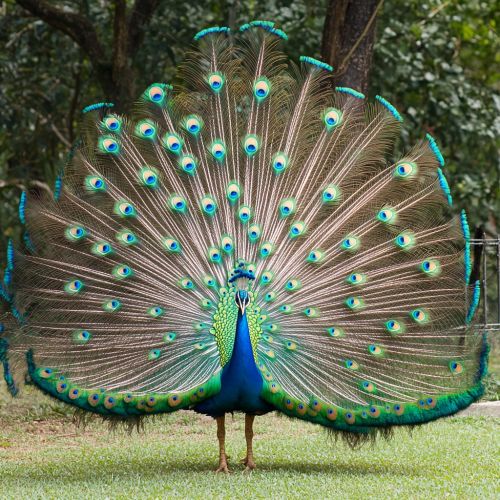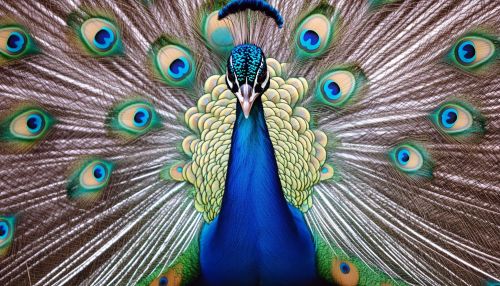Mate Choice
Introduction
Mate choice is a critical aspect of sexual selection, a fundamental mechanism in evolutionary biology. It refers to the selection of a reproductive partner based on specific traits, behaviors, or characteristics. This process influences the genetic diversity and fitness of offspring and can drive the evolution of species. Mate choice is observed across a wide range of taxa, including humans, and is influenced by various factors such as genetic compatibility, physical attributes, and social behaviors.
Theories of Mate Choice
Sexual Selection
Sexual selection, a concept introduced by Charles Darwin, is a type of natural selection where individuals with certain traits are more likely to find mates and reproduce. Sexual selection can be divided into two main components: intersexual selection (mate choice) and intrasexual selection (competition among individuals of the same sex).
Good Genes Hypothesis
The good genes hypothesis suggests that individuals select mates based on traits that indicate genetic quality. These traits are often associated with better health, higher fertility, and greater survival rates of offspring. For example, in many bird species, females prefer males with brighter plumage, which is an indicator of good health and genetic fitness.
Handicap Principle
Proposed by Amotz Zahavi, the handicap principle posits that certain traits are costly to maintain and thus serve as honest signals of an individual's fitness. For instance, the extravagant tail feathers of a peacock are energetically expensive to produce and maintain, signaling the male's overall fitness to potential mates.
Runaway Selection
Runaway selection, also known as the Fisherian runaway, is a process where a trait becomes increasingly exaggerated over generations due to a positive feedback loop between mate preference and the trait itself. This can lead to the development of extreme characteristics, such as the long tails of male widowbirds.
Factors Influencing Mate Choice
Genetic Compatibility
Genetic compatibility plays a crucial role in mate choice, as it affects the genetic diversity and health of offspring. Individuals often prefer mates with dissimilar major histocompatibility complex (MHC) genes, which can enhance the immune system of their offspring.
Physical Attributes
Physical attributes such as size, coloration, and symmetry are important factors in mate choice. These traits can indicate an individual's health, genetic quality, and ability to provide resources. For example, in many mammal species, females prefer larger males, as size is often associated with strength and the ability to protect and provide.
Behavioral Traits
Behavioral traits, including courtship displays, vocalizations, and parental care, are also significant in mate choice. These behaviors can signal an individual's fitness and willingness to invest in offspring. For instance, male bowerbirds build elaborate structures and perform complex dances to attract females.
Social and Environmental Factors
Social and environmental factors, such as population density, resource availability, and social hierarchies, can influence mate choice. In some species, individuals may choose mates based on their social status or access to resources, which can affect the survival and well-being of offspring.
Mate Choice in Humans
Evolutionary Perspectives
From an evolutionary perspective, human mate choice is influenced by both biological and cultural factors. Traits such as physical attractiveness, intelligence, and social status are often considered important in mate selection. These preferences can be linked to evolutionary pressures related to reproductive success and offspring survival.
Cultural Influences
Cultural norms and values play a significant role in human mate choice. Societal expectations, traditions, and economic factors can shape individual preferences and behaviors. For example, in some cultures, arranged marriages are common, where families select mates based on social and economic considerations.
Psychological Factors
Psychological factors, including personality traits, emotional compatibility, and shared interests, are crucial in human mate choice. Individuals often seek partners who share similar values, beliefs, and goals, which can lead to more stable and satisfying relationships.
Mate Choice Mechanisms
Sensory Bias
Sensory bias refers to the preference for certain traits based on pre-existing sensory preferences. This mechanism suggests that individuals are more likely to choose mates with traits that exploit their sensory biases. For example, female guppies prefer males with bright orange spots, which mimic the appearance of ripe fruit, a food source.
Sexual Imprinting
Sexual imprinting is a process where individuals develop mate preferences based on the characteristics of their parents or other influential figures during early development. This mechanism can lead to the preference for familiar traits and can influence mate choice throughout an individual's life.
Mate Copying
Mate copying occurs when individuals observe and copy the mate choices of others. This behavior can lead to the preference for mates that are perceived as popular or desirable within a social group. For example, female fish are more likely to choose males that have been observed mating with other females.
Consequences of Mate Choice
Genetic Diversity
Mate choice can significantly impact genetic diversity within a population. By selecting mates with diverse genetic backgrounds, individuals can enhance the genetic variability and adaptability of their offspring, which can improve their chances of survival in changing environments.
Sexual Dimorphism
Sexual dimorphism, the difference in appearance between males and females of a species, is often a result of mate choice. Traits that are favored by one sex can become more pronounced over generations, leading to distinct differences in size, coloration, and morphology between males and females.
Speciation
Mate choice can drive speciation, the formation of new and distinct species. When populations develop strong preferences for certain traits, they may become reproductively isolated from other populations, leading to the divergence of species over time. This process is known as sympatric speciation.
Research Methods in Mate Choice Studies
Observational Studies
Observational studies involve monitoring and recording the behavior of individuals in their natural environment. These studies can provide valuable insights into mate choice behaviors and preferences without interfering with the subjects.
Experimental Studies
Experimental studies involve manipulating variables to test hypotheses about mate choice. These studies can be conducted in controlled laboratory settings or in the field and can help identify causal relationships between traits and mate preferences.
Genetic Analysis
Genetic analysis techniques, such as DNA sequencing and genotyping, are used to study the genetic basis of mate choice. These methods can reveal how genetic compatibility and diversity influence mate selection and reproductive success.
Comparative Studies
Comparative studies involve comparing mate choice behaviors across different species or populations. These studies can help identify common patterns and unique adaptations related to mate choice and can provide insights into the evolutionary processes driving these behaviors.
See Also
References


